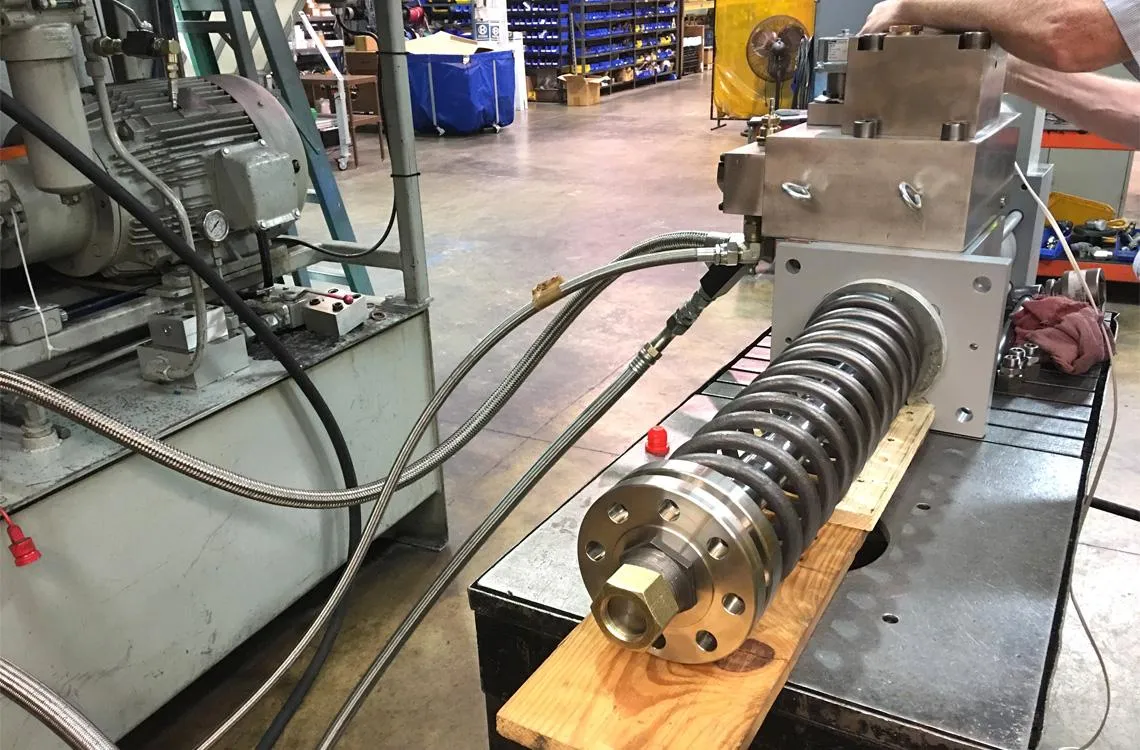When seeking repair for hydraulic actuators in the turbine of a power plant, choose a partner that has OEM experience and uses OEM parts for repairs. Using anything other than OEM parts can result in reduced component life, forced outage and ultimately, extensive downtime. Service life of the plant’s turbine is critical to power plant operation. Failure of a servo valve, test solenoid valve, dump valve, check valve, or hydraulic cylinder during cycle operation could result in millions of dollars of lost revenue. Partnering with an experienced repair shop can reduce unwanted downtime.
Not all repair shops approach repairs for the power generation industry in the same manner. An experienced repair shop will want to know the following information before completing an actuator repair:
What hydraulic oil is being used for the application?
Hose-cutting saws allow you to customize your assembly's length to the exact specifications you need. When choosing a good hose-cutting machine, you want to place importance on how the machine holds and cuts your hose. Most machines will simply lower the abrasive saw down on the hose and cause the hose to compress and deform. This action can cause a lot of debris from the blade to go inside your hose. Danfoss's Aeroquip Hose Saw is one option that reduces the amount of friction, heat and debris because it uses two small cylindrical rods that force the hose to stretch at the point where the saw makes contact.
The size of the hose will determine which hydraulic hose saw will work best for your business. The larger the hose you’re working with, the larger the saw needs to be. The size and material of a hose is what will help you determine the right blade. Different blades hold different purposes; be sure to check out our diagram to determine what blade will work best for your specifications.
Who is the OEM of the actuator?
An experienced actuator repair shop should always ask you who the OEM of the actuator is so that they can properly address any issues with it. Each brand of actuator will require specific adjustments to it.
What is the serial number of the actuator?
When purchasing your in-house crimping equipment, we highly recommend getting a projectile foam launcher for cleaning out remaining debris from the assembling process. The launcher includes a batch of foam pellets in varied sizes to accommodate different hoses. After your initial purchase of the launcher, you can simply reorder the pellets in the sizes you need.
Projectile cleaners are a great accessory to keep on hand when crimping assemblies in the shop. The typical process of cleaning a freshly cut hose without the use of a projectile is to simply shoot air through the tube; this method can leave debris in the tube that can gunk up your system. Using only air can increase maintenance issues like changing your filter or replacing your hydraulic fluid more frequently. Therefore, shooting the foam projectiles through the tube cleans by eliminating contaminates left in your new assembly. Using the projectiles properly can help you decrease the frequency you are filtering in new hydraulic fluids which can result in reduced maintenance time on your system.
*Instructions included with purchase of projectile launcher
Knowing this information before the actuator repair can determine the approach taken so that downtime can be limited. If these questions are being asked, you may have found a reputable, experienced actuator repair partner.
Get Connected Today!EHC experts at Applied Fluid Power have extensive experience with major OEMs like Westinghouse, Siemens, GE, Mitsubishi, Toshiba, and Hitachi. Our experts are ready to repair your actuators quickly and effectively with OEM parts. Contact one of our experts today for advice on choosing a repair partner or discuss how we can service your actuator repairs. |

|


